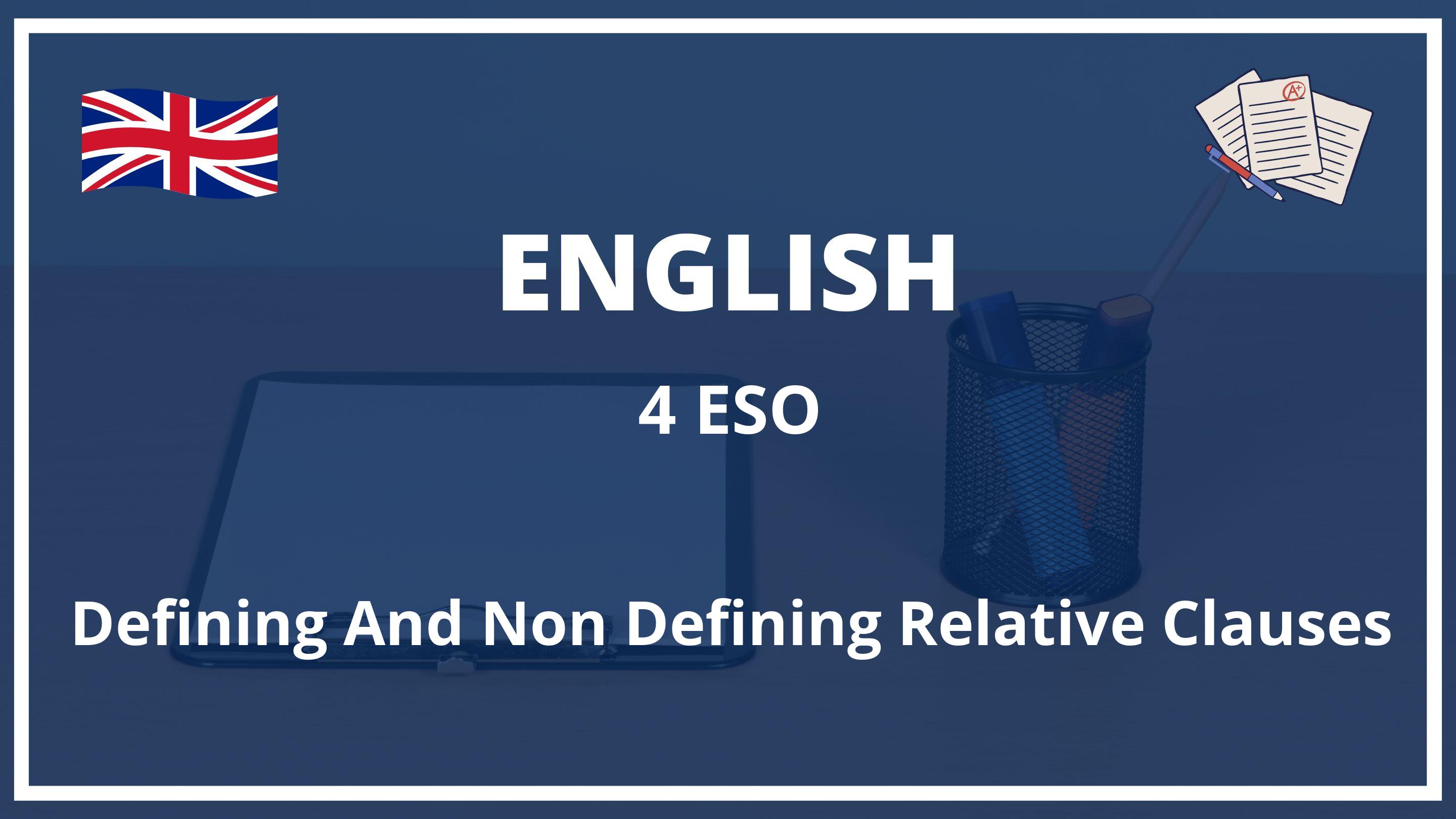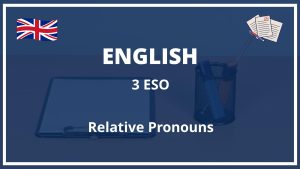
Abrir Ejercicios Defining And Non Defining Relative Clauses 4 ESO | Exercices
A relative clause is a clause that is connected to a noun or pronoun. There are two types of relative clauses: defining and non-defining. Defining relative clauses give information that is essential to identify the person or thing that we are talking about. Non-defining relative clauses give extra information about a person or thing. We use relative clauses to make our writing and speaking more interesting and less repetitive. Relative clauses usually come after the noun or pronoun that they modify. However, this is not always the case. Defining relative clauses usually have a pronoun or a noun as the subject and a verb. The pronoun or noun that is the subject of the relative clause is called the antecedent. Here are some examples of defining relative clauses: The man who is wearing a blue shirt is my brother. The woman who is sitting next to me is my mother. In these examples, we can see that the antecedent is in bold. The relative clause gives us information that is essential to identify the person. We can also use relative clauses without an antecedent: People who drive too fast are a danger to themselves and to others. In this example, the relative clause gives us information that is essential to identify the type of person. Non-defining relative clauses give extra information about a person or thing. They are not essential to identify the person or thing. Here are some examples of non-defining relative clauses: My brother, who is wearing a blue shirt, is a doctor. My mother, who is sitting next to me, is a nurse. In these examples, the relative clauses give us extra information about the person. We can still identify the person without the relative clause. We can also use relative clauses without an antecedent: People who drive too fast are a danger to themselves and to others. In this example, the relative clause gives us extra information about the type of person.
Ejercicios Resueltos Defining And Non Defining Relative Clauses Ingles 4 Eso
Ejercicios Resueltos Defining And Non Defining Relative Clauses Ingles 4 Eso
Defining and non-defining relative clauses are a type of subordinate clause that adds extra information about something without changing its essential meaning. Non-defining relative clauses are usually placed after the noun they modify, while defining relative clauses are usually placed before the noun.
Defining relative clauses give information that is essential to understanding the sentence, while non-defining relative clauses give extra information that is not essential. For example, in the sentence «The man who lives next door is a doctor,» the relative clause «who lives next door» is essential to understanding which man is being talked about. In contrast, in the sentence «My sister, who lives in New York, is a doctor,» the relative clause «who lives in New York» is non-essential and could be removed without changing the essential meaning of the sentence.
Here are some tips for using defining and non-defining relative clauses:
1. Use a comma to set off a non-defining relative clause:
My sister, who lives in New York, is a doctor.
2. Do not use a comma to set off a defining relative clause:
The man who lives next door is a doctor.
3. When a relative clause comes after the noun it modifies, it is usually non-defining:
My sister, who lives in New York, is a doctor.
4. When a relative clause comes before the noun it modifies, it is usually defining:
The man who lives next door is a doctor.
Now that you know the difference between defining and non-defining relative clauses, try the following exercise to test your knowledge.








